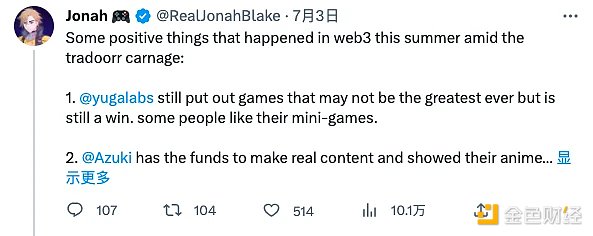a16z partner jonlai: the most successful application is the packaged game
In the narrative of blockchain or Web3, the most common idea is to use “Token” to motivate behavior, so the common narrative of many entrepreneurs is, ” Because I gave (Token) incentives, it can naturally attract User… “
I am usually skeptical about such expressions. One is that this idea overestimates the complexity of human nature . This society itself has a set of incentive systems to drive human behavior, which can be vanity, like and approval. Whether it is the Internet in the past The points/badges, or the Token/NFT of today’s Web3, are only a short-term external incentive, the real important thing is to meet the internal needs.
Second, it is more important to retain users than to acquire users . Traditional Web2’s “coin-spending subsidy” and Web3’s “airdrop expectation” can gain popularity in the short term, but how to turn short-term use into long-term behavior habits is a more important question.
Today, I share the article “The most successful application is a packaged game” from a16z’s partner in the game field, jonlai, to explore the mechanism behind gamified applications, and what kind of game-style applications can retain users for a long time?
- How Blockchain Is Impacting Online Poker
- Blockchain in the annual report of listed companies: a comparative analysis of six state-owned banks
- More than 60 organizations in Europe and the United States jointly developed: Rehabilitation Certificate for New Coronavirus Patients Based on Blockchain
The following is the text:
Gamification is dead, of course, not as you might think.
When you see gamification, you think of the application of video game mechanics like points, badges and leaderboards or some products that are not in-game. That’s why Tripadvisor offers points for writing reviews, why Starbucks has a little program that earns you free coffee with loyalty purchases, and why Google News started out with badges for reading articles.
However, the charm of gamification has faded over the past decade.
In its glory days, many early developers used gamification in ways that were not in the interests of users. We can see that writing reviews is good for Tripadvisor, not the user. Allowing Google News to access web history could even be detrimental to privacy-conscious users.
These gamification projects have boosted user engagement to a certain extent in the short term, but most have not been able to retain users in the long term. To date, many of these projects have been closed.
These gamification projects fail because they ignore the most primitive laws behind good game design – the foundation of great video games is user retention. Classic games like World of Warcraft and Candy Crush Saga have captivated users for over 10 years. These games are successful because their gameplay mechanics align with the user’s intrinsic motivation. By creating feedback loops that teach and reward users, they provide a long-term path to “game mastery.”
Many apps that do well today incorporate these game design principles in their core product design. These game-like experiences give users fun and build long-term habits. This category includes many popular modern applications covering everything from productivity, social networking, finance, mental health and education.
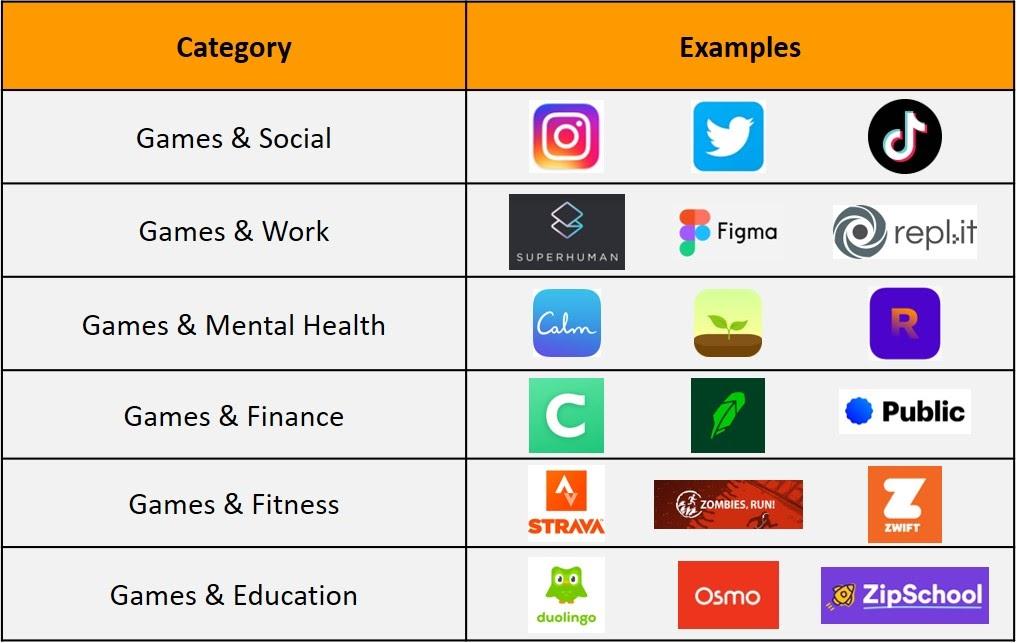
Motivation, mastery and feedback
While there are many different frameworks for what a game is, most agree on three core principles.
Motivation: Why would a person want to play your game?
Mastery: What are the rules and systems of the game?
Feedback: How will this person learn these rules?
Let’s take a look at a few successful games that have applied these principles.
Motivation
Most game designers today subscribe to self-determination theory, which states that behavior can be intrinsically or extrinsically motivated.
Extrinsic motivations come from outside, such as monetary rewards or orders from parents/bosses.
Intrinsic motivation arises from innate psychological needs such as autonomy (desire to be in control of one’s own life), competence (desire to control outcomes), and relatedness (willingness to connect with others).
Most games focus on intrinsic motivation as the most effective and long-term driver of behavior. Take the entry level of Mega Man X, a classic sci-fi action game. During the first 5 minutes of the game, the user will encounter and be defeated by Vile, (Vile is a very powerful enemy battle bot).
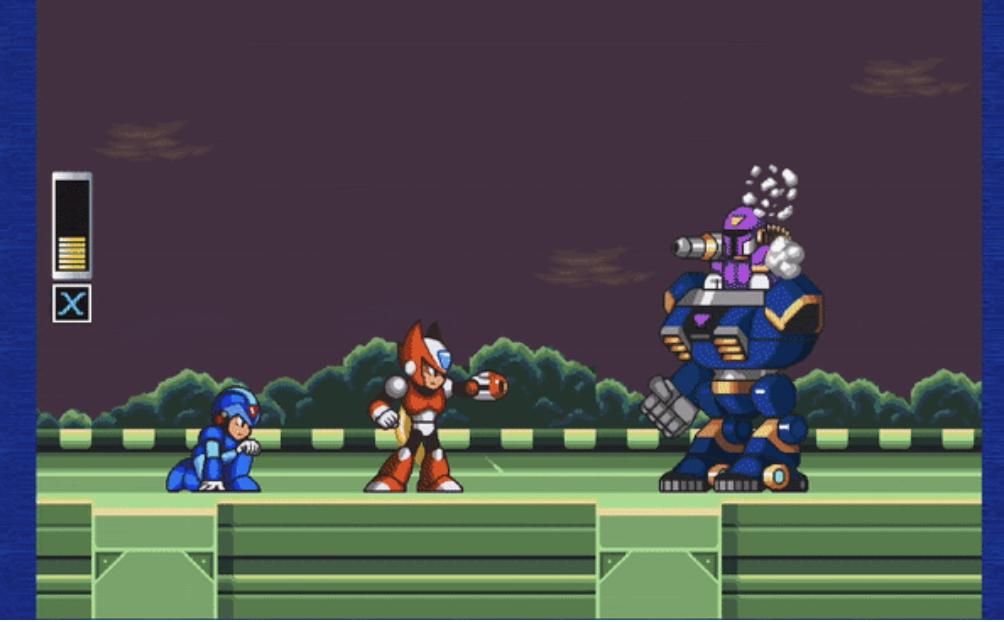
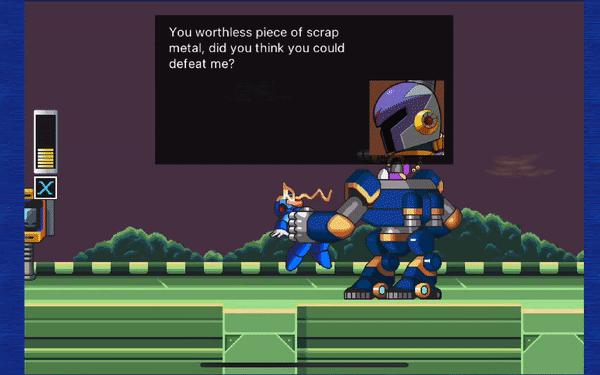
However, instead of seeing “Game Over”, the user is rescued at the last minute by a red robot named Zero, who wears ornate armor similar to a Ferrari. As the user kneels in front of Zero, he declares that you will become stronger, and one day “maybe even become as strong as me”.
This sequence of actions is a powerful display of intrinsic motivation, and the game encourages users to set two goals.
1) Become as powerful as Zero
2) Defeat Vile
These goals constitute the “victory conditions” of the game and are motivating because they directly reinforce the user’s ability (to become stronger) and autonomy (to decide for themselves what to do).
More importantly, users are incentivized to keep playing without using any gamified routines, badges, or points. Users set out to achieve self-determined goals, and games provide them with the tools to achieve them. This aligns the product with intrinsic needs.
This is also a key principle that many gamification applications fail to grasp. Instead, they see the accumulation of badges or points as a goal in itself. Without the support of intrinsic needs, these mechanisms end up being superficial, extrinsic drivers that quickly tire users.
Mastery
Cognition is the second key principle of game design. A player motivated as a winning condition is ready to learn the rules of the game. In the case of Mega Man X, these rules include control schemes (how to run and shoot) and enemy behavior. These rules show the player how to win: Path To Mastery.
Mastery is an important part of every activity and is related to the inherent need for competence. People want to improve their skills as they engage in an activity, whether it’s learning a new sport or playing a game. Of course, they also expect that mastery is fair, and that progress should be based on skill and choice, not luck.
Game designers often struggle with finding the right balance of difficulty, keeping it neither too hard nor too easy. Well-crafted games create flow, a mental state in which the user is intensely focused on the present moment and time flies by.
The same is true for non-gaming products. For example, painting a landscape or playing a challenging piece of music on the guitar also tends to generate flow.
Combining intrinsic motivation with a balanced mastery path is critical to maintaining learning outcomes. As long as the rules are fair and the goal looks achievable, users who get to a certain point in a game or activity will usually stick with it. What often goes wrong with gamified apps is that they celebrate the use of systems for tracking mastery, like levels, experience, badges, without any real challenge or path to mastery.
There’s little skill to master when you “level up” in Tripadvisor, and nothing really to celebrate when you get a Google News badge for reading an article on a website. To be more effective, these systems need to measure real skill progress towards the intrinsic goals that users care about.
Feedback
Feedback is the third key design principle, how users learn the rules of the game/product.
The best games teach through repeated loops with clear cause-and-effect relationships, such as Super Mario teaching the user through the feedback loop of death.
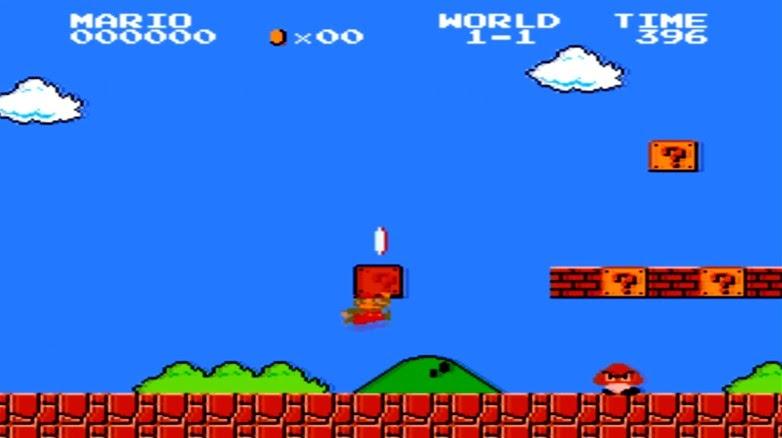
An enemy, Goomba, appears at the beginning of the first level. If Goomba touches Mario, he dies and starts over at the start of the level, but only back 3 seconds. This short, harmless loop encourages users to experiment until they find they can skip or jump on top of Cuba.
Iterative loops also provide positive feedback for the user to take the right action. In the animation below, Candy Crush Saga celebrates players matching 3 candies of the same color with a spectacular explosion. The game also employs serendipity to surprise users with unexpected results. As users string together matching candies, the candies appear on the screen in layers that are too fast to track, such as unexpected happy moments like fireworks, fish and lightning.
The best designers usually assume users won’t read instructions, and generally design products in a Learning By Doing fashion, with iterative feedback loops set up along the way. These loops help guide users on the path to mastery and ultimately achieve their goals. Few gamified applications create feedback loops as naturally as the example above.
Game-like, but not Gamification
The three core design principles of Motivation, Mastery, and Feedback (MMF) have gone far beyond games over the years. In the 1990s, these principles were incorporated into human-centred design by the renowned design firm IDEO. Today, many of the most popular consumer and enterprise applications use MMF in their core designs.
Games and Social
Many of our most popular social networks are gaming apps. Apps like Instagram, Twitter, and Tik Tok tap directly into the intrinsic motivation of users. Users express themselves as they create stories (autonomy) and connect with others as they do so (relevance). There’s even an optional path to mastery, as users can work to gain followers and give feedback in the form of likes.
Clubhouse is a relatively new app that further embraces contingency in its core design. The app creates moments of joy by letting users enter the live room and recreate the feeling of “running into” a friend. Top Clubhouse speakers allow other users to host or improve their public speaking skills and achievements.
In any case, note that these social apps do away with the use of points or badges, but have strong long-term user retention, the hallmark of a gaming experience.
play and work
Recently, a new generation of productivity-enhancing software has emerged that is more like a game than a tool. Repl.it, a browser-based IDE; Figma, a collaborative design tool that introduces multiplayer modes for coding and design, respectively. Developers can work, comment, and learn from each other in real time, and this “human element” makes these software more fun than ever before.
Email app Superhuman is also a game-like example. Led by former game designer Rahul Vohra, Superhuman has set a goal for its users to have an inbox zero, and provides fine-tuned controls and inbox rules to help users through the process. When a user reaches a “zero” inbox, Superhuman displays a beautiful, high-definition picture of the natural landscape that changes daily. At the bottom of the image, Superhuman tracks the number of days a user has reached a “zero” inbox, which also reinforces the path to mastery.

Gaming and Mental Health
Forest, a gaming productivity and mental health app with over 6 million paying users, turns staying focused into a game in itself.
The user begins the concentration training by planting a tree. The tree grows while the user is working, and wilts if the user leaves the app before the time runs out.
A withered tree is negative visual feedback that discourages users from distractions, like dealing with social media or email. Successfully staying focused will feed a tree that the user can plant in their personal forest, the lushness of the forest showing the user’s achievement and length of focus (which is also a kind of path to mastery).
Over time, Forest hopes to build long-term user habits around being present and being mindful.
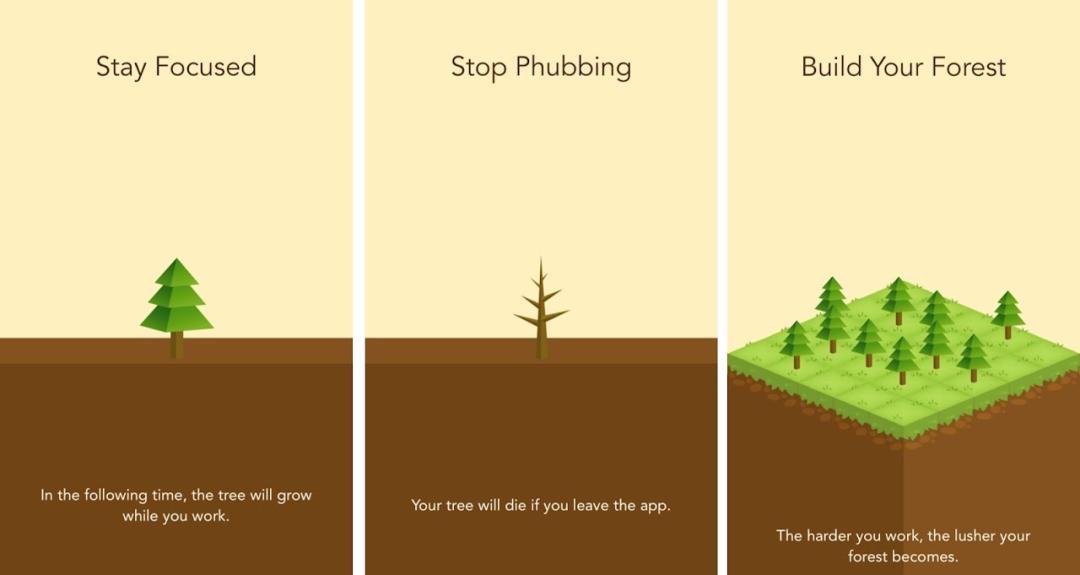
Games and Finance
Chime Bank’s automated savings account turns saving money into a game. Chime has set a clear goal for its users: save money, and has designed a whole process to help users achieve this goal.
The Chime debit card rounds the transaction to the nearest dollar and automatically transfers to a savings account. This savings amount varies from transaction to transaction and is highlighted in color on the Chime app’s home page feedback, giving users an unexpected moment of joy when opening the app.
By adding serendipity to its design, Chime makes the traditionally tedious chore of reviewing bank statements fun.
This positive feedback loop reinforces savings goals and helps users develop good habits on the road to savings mastery. Users may even have an incentive to save outside of Chime over time.
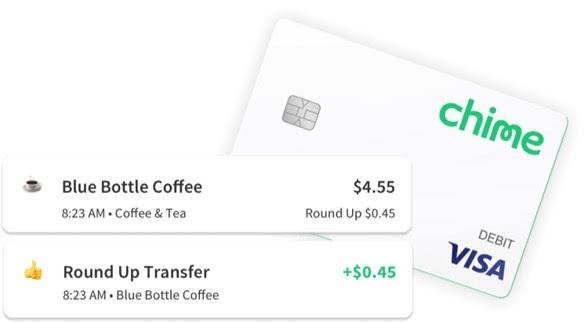
Games and Fitness
Zombies, Run and Strava are game-like personal fitness apps that make running and cycling more fun.
Zombies is an audio app in which users play as survivors of a zombie outbreak. Zombies motivate users to run by having them perform targeted tasks, such as finding supplies or escaping zombies. Users win by running a certain speed or distance. The app tracks every run and emails daily progress reports celebrating milestones and task completions for different miles.
Strava employs a similar goal-setting and feedback loop as Zombies, and adds social connections. Strava maintains leaderboards for users running or cycling, so users can see their progress relative to their peers. As users run faster, they see themselves climbing the leaderboard in real time. The leaderboard itself isn’t inherently motivating, but it works well in Strava because competition is a natural competitive activity and users want to measure themselves against their peers.
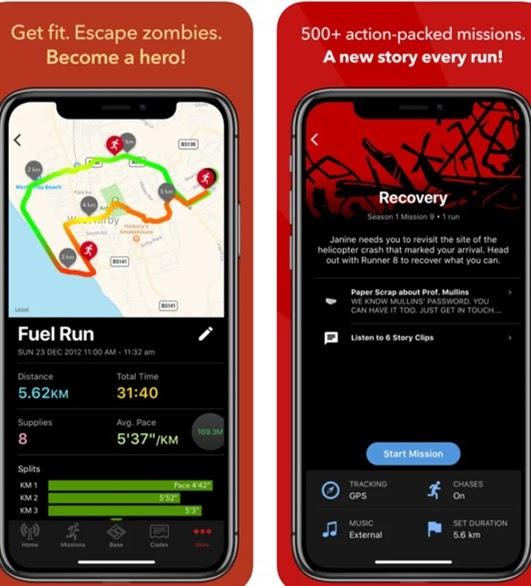
Games and Education
Duolingo is a popular, game-like language learning app. The app sets a goal for users to learn a language, and recommends that users take 15-minute lessons a day to achieve mastery.
Lessons are divided into short, easier graded lessons, similar in length to mobile game lessons. The lessons themselves are well planned, with an emphasis on helping the user achieve a state of flow. Each lesson mixes new/old words and matches user performance. If the lessons seem too easy, new words are created, and vice versa.
Duolingo also keeps track of how many days a user has been taking classes in a row and reminds them if they are in a row. This completes heteronomy (avoiding being a bad student) while maintaining user autonomy.
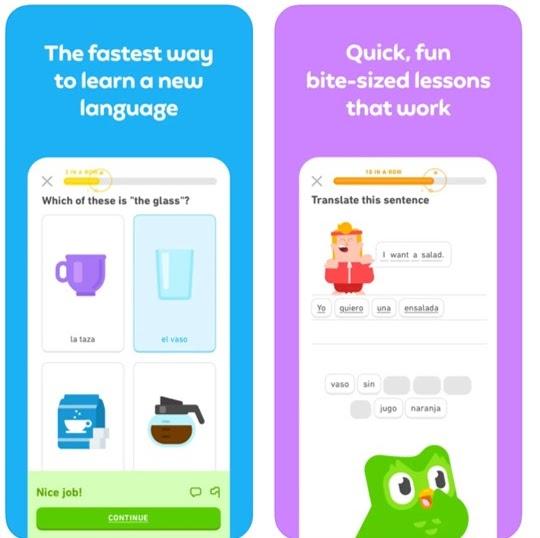
Looking to the future
These three core principles have been incorporated into many of today’s most successful modern apps, and we might no longer call it gamification, but the most basic principles are more relevant in gamified apps today than ever before.
Whereas early gamified apps prioritized short-term engagement over long-term retention, game-based apps closely aligned with user needs and achieved long-term user retention. The core of the MMF framework has always been user retention. When people have fun and realize that they are achieving their goals, they build long-term usage habits. In this way, gaming apps have helped users move toward lifelong goals, from saving money, to exercising regularly, to being more productive at work, say.
We will continue to update Blocking; if you have any questions or suggestions, please contact us!
Was this article helpful?
93 out of 132 found this helpful
Related articles
- Blockchain war "epidemic" action (1): big data application
- Observation | Is the open source of the blockchain the biggest flaw in the business model or the strongest defense?
- Video: Blockchain opens a new chapter in medical health (Part 1)
- Video: Blockchain opens a new chapter in medical health (Part 2)
- Can Brave succeed in challenging Google Chrome with over 1 billion users?
- Opinion | 19 useful indicators to measure the progress of blockchain
- Video | OK Blockchain 60 Lecture: How Blockchain Works




